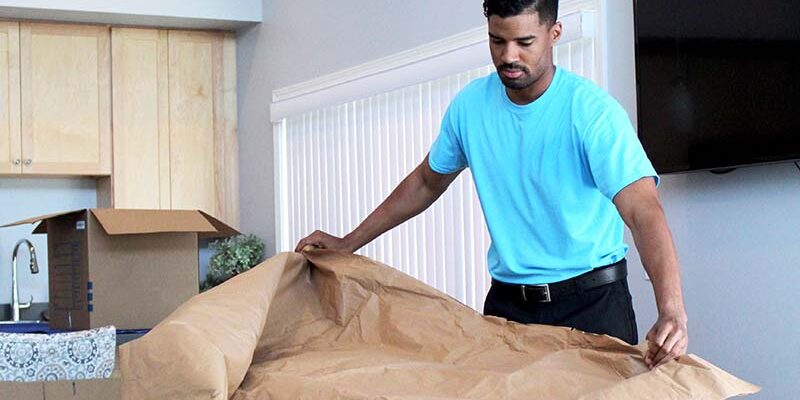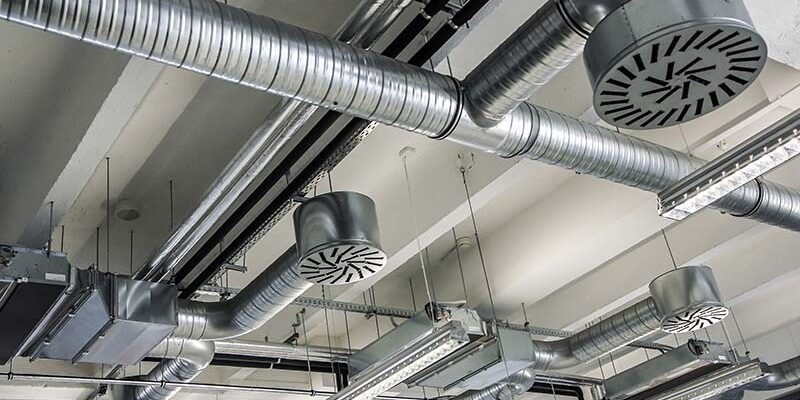Hiding Out!

Whether engaged in light restoration or full-scale structural drying, restoration professionals know much of their work is judged on how things smell — or don’t smell — when the job is done.
Any pesky, lingering odors often trigger thoughts of a job not complete to those who have suffered from a water damage. And they would be right, according to virtually all industry pros.
A great litmus test of a successful water damage removal job is when the moisture meters indicate everything is dry, along with no lingering malodors remaining, such as a musty or moldy odor.
Is it really dry?
Larry Carlson with Phoenix Restoration Equipment said that — most often — in cases like this, when there is a lingering malodor after a water damage job is complete, there is hidden moisture somewhere. “There has to be,” he said. “If it smells wet, it’s wet. It can be a challenge to find all moisture on some jobs, but that has to be accomplished.”
Carlson pointed to the value of careful monitoring of the progress of water damage jobs and matching both the quality of equipment along with the number of air movers and dehumidifiers required to maximize drying effectiveness.
Ron Colling, the national restoration product manager with Interlink Supply/Aramsco, added that odors after a water damage are usually due to pre-existing mold issues or incomplete drying. “High humidity areas can make it hard to completely eradicate the mold or its odors for very long — without encapsulating or permanently conditioning additional air spaces like crawlspaces or attics.”
He stressed the need for restoration contractors to “know their meters well” and how to find hidden moisture.
Bill Weigand, the director of restoration chemicals with Legend Brands, said odors that become noticeable after water restoration projects should concern both building owners and restoration personnel, as the cause is frequently microbial growth from insufficient drying. “A microorganism can release gasses during the digestive cycle called microbial volatile organic compounds, or MVOCs. Proper drying and using moisture meters to verify that all materials have been returned to their proper moisture content greatly reduces the occurrence of musty odors,” he said.
Mike McGuire, president and CEO of Thornell Corp (Odorcide), knows that humidity can be the issue as well. “Humidity is a contractor’s nightmare when trying to eliminate odors. Odors that appear to be gone after work completion can return on these high humidity days.” One solution, according to McGuire, is to use odor elimination products with a residual benefit that is activated by moisture from humidity.
Tom McArdle, vice president of Odorox, said to consider the water damage job might have been worse than originally thought. “Water can release odors that were already there,” he said, “but they were not airborne, so we couldn’t smell them. A wet dog is probably the easiest example. Why is it that a dog smells worse after spraying it with clean water? The odors were always on the dog, but now they are reacting with the water.”
McArdle said when particles become airborne they can find their way via penetration into porous materials that are in the structure, such as carpet, drywall, cabinets, contents, clothing and the like. So when the contractor may have accomplished the physical cleaning and drying, porous materials will release odors over a period of time, causing customer complaints.
Taking on the challenge
Regardless of “why” odors may linger or return after a water damage cleaning is completed, the issue has to be addressed and the problem remediated. Customer complaints have never helped build a successful restoration company.
To start with, McArdle offers this advice: “Address the problem before it even starts, such as running a hydroxyl generator next to an air mover that is being used in the drying process.” He said this will accomplish both the elimination of odors that were added to the project, such as from sewage, and also eliminate odor molecules so they can’t reform and return. It handles odors from porous surfaces not easy to clean. An added benefit, he said, is this technique also helps prevent microbial growth.
Colling added, “One of my most recommended odor control systems, for onsite use, is dry vapor technology.It is safe and effective to control and neutralize odors until complete remediation is accomplished.”
Restoration contractors have to consider compatibilities of chemistries used for odor control purposes, as well. McGuire said that on restoration jobs, choose a deodorizer that is not affected by detergents or antimicrobials. “Quite often, the chemistries don’t blend well and you end up wasting time and money both with the initial application and expensive call-backs.”
Other odor issues should be identified as well. One, according to Weigand, involves certain building materials and adhesives. “These can release volatile organic compounds after being subjected to excess moisture, which can also cause post-restoration odors. Again, proper drying and verification of it will reduce the frequency of these types of odors.”
Previous contamination
Consider previous contamination as the issue, especially from sources such as urine. While there are many contaminants that — if not completely removed during the cleaning and drying process after a water damage occurs — can create odor issues, urine is most often at the top of the list.
The reason is that, as urine dries, the contamination creates alkaline salts, which are teeming with bacteria. These salts are absorbent, and direct moisture and moisture from the air activates malodors. This contamination never dries out on its own.
Using moisture probes or ultraviolet (UV) light helps restoration technicians locate and then remove odor-causing contamination. Although your moisture meters and your drying calculations may indicate the structure is dry, these pockets of contaminated areas can be frustrating to deal with.
“Fabrics such as carpet and drapery materials ‘bloom’ or open in warm conditions, releasing malodorous gasses trapped within materials,” Weigand explained. During the drying process, when these materials are heated in higher than normal humidity conditions, the pores open. As the pores of the materials open, gasses are allowed to escape at a faster than normal rate, causing noticeable malodors. And when drying is complete and temperatures return to normal, odors seem to be gone — until warm weather or humid conditions bring back malodors, sometimes with a vengeance.
According to Weigand, all surfaces contaminated by the objectionable odor should be addressed to keep the odor from “coming back.” Thorough investigation and treatment of source odors can prevent future and unprofitable trips to treat post-restoration odor complaints.
Psychological odors
Lastly, there is the issue of psychological odors. These are odors “in the customer’s head” and can — frankly — be more difficult to deal with than real odors. After a job is complete, they still smell “something” although when you inspect the job, you smell nothing at all.
What can you do? A couple of things.
The first is to explain how they may detect odors after the drying is complete, but they shouldn’t judge the job until several days have passed, as some odors can linger in the air.
The second is to leave behind a pleasant, masking deodorizing scent. This will linger over a short period of time, and may keep your client from “noticing” a psychological odor. It also helps keep them from calling you back to remediate an issue that isn’t there at all.
From start to finish, restoration work is technical and often challenging — and part of the challenge is dealing with people and their imaginations.
Jeff Cross is the executive editor of Cleanfax and is an industry trainer and consultant. He can be reached at (740)973-4236 or [email protected]












